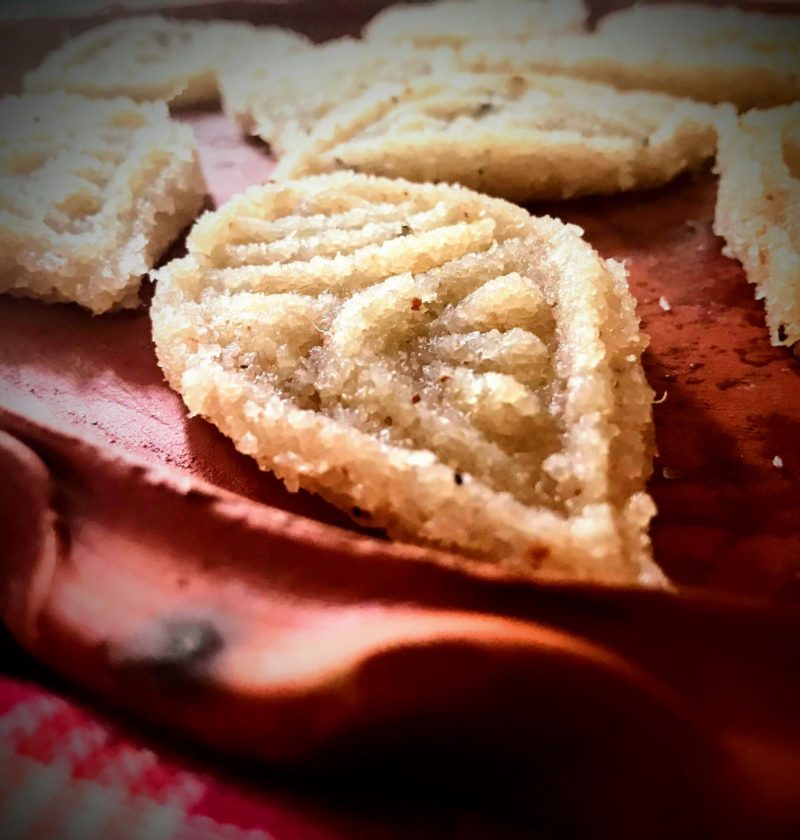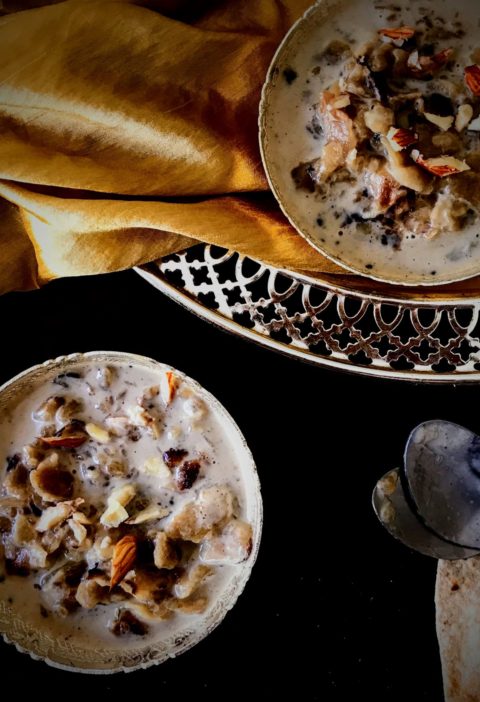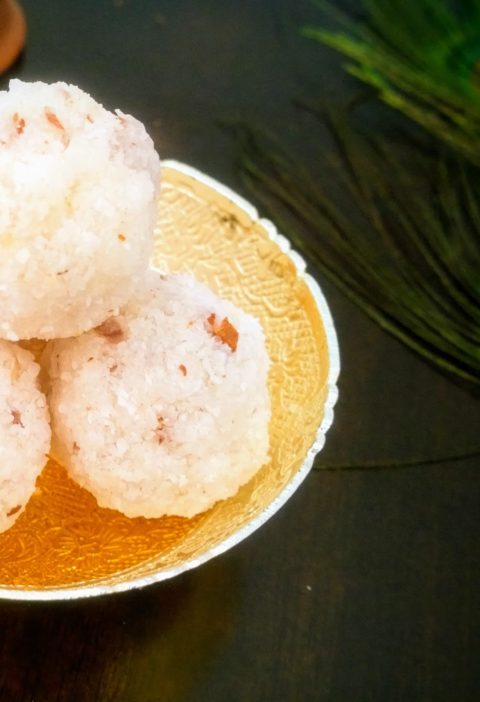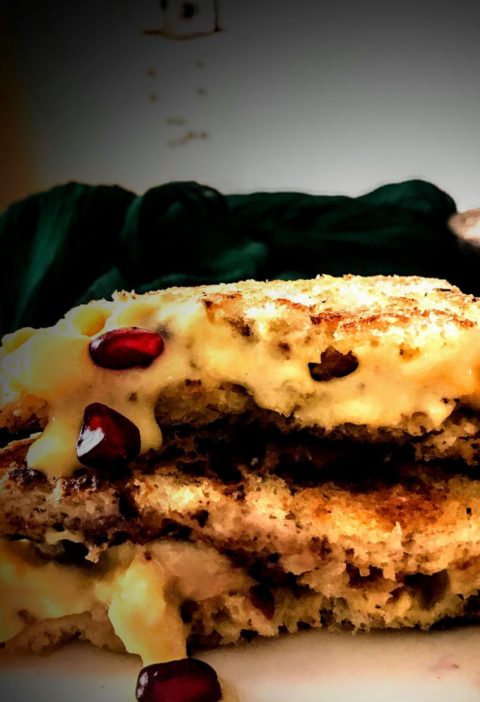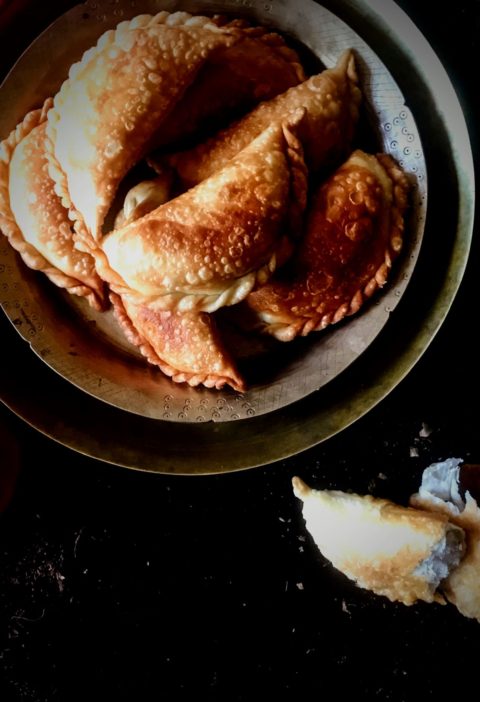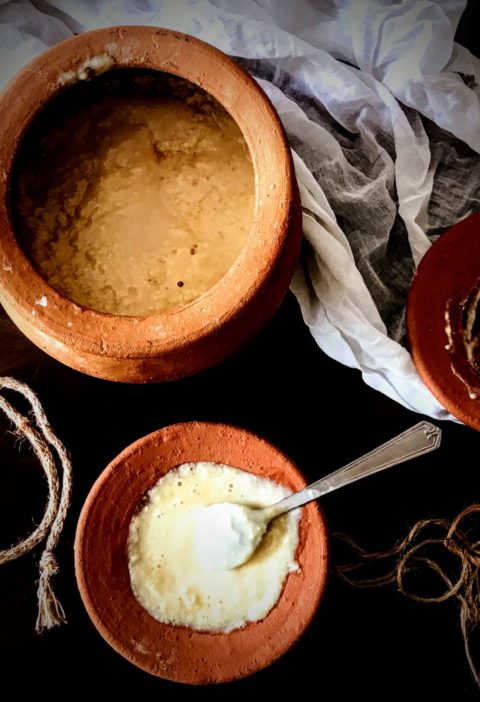As Adam Osborne rightly said, ‘The most valuable thing you can make is a mistake. You can’t learn anything from being perfect’. I actually understood his words in the truest sense, when I made these Narkeler Sandesh or the Bengali Coconut sweetmeat, and I almost screwed them up, had not been my mother-in-law who came to my rescue.
I started my adventure with Narkeler Sandesh with lot of fond memories, love and confidence and minus the experience. I was confident because my other dessert recipes or shall I say experiments using coconut, being it Narleler Nadu or Aloo Pithe were successful, and the only challenge I could foresee was pulling off the coconut mix from the mould. Well, since assumption and realities are two different things, and contrary to my foresightedness, the damage happened way before the introduction of moulds in the process of preparing the Sandesh, as my coconut mix became powdery, hence no way could go to the mould.
But, just like the open door among all the closed ones, or the right among the wrongs, my mother-in-law at the right time added around a tablespoon of milk to the coconut mix, which made the mix soft, but was unable to hold. Hence, she further continued her rescue operation and added ¼ cup sugar(yes, initially I added only ½ cup sugar, with which I was successful in preparing Narkeler Nadu) along with little water to a pan and heated the pan, till the sugar completely dissolved in water. She then added the sugar and water solution to the coconut mix, and thus I acquired the sticky texture of the coconut mix, which was the most important part. There were also other things which had contributed to the dismay, which we realised later. I have listed those towards the end of the post, so that you can be careful, when you are trying the recipe.
Coming to Sandesh, now a days when we refer Sandesh or Shondesh, it indicates the chhena based or the cottage-cheese based Sandesh. However, traditionally, long before cottage cheese or curdling of milk was introduced in Indian households, Sandesh were made with khoya (solidified milk) or coconut, which were still practiced in many households in Bengal post-independence. The practice of making Sandesh was so prevalent among Bengali Hindus, that the wedding custom was considered incomplete without gifting Sandesh made by female of the house to the groom’s family. Probably that’s why the name Sandesh, influenced from the Hindi word meaning message, where each bite of Sandesh carried the message of love, joy and gratitude. Though, gifting Sandesh at the wedding still persists, however, these days the Sandeshes are sourced from local sweet shops, which are mostly chhena based.
Growing up in a Bengali middle-class foodie family, with the added advantage of the presence of my paternal and maternal grandmother, Sandesh making with khoya and coconut was a very frequent free-time stress buster for my mom and grand-moms, when there was excess of unused milk or number of coconuts just lying on the floor demanding attention. Although I was not allowed for an active participation, as Sandesh making with mould is itself an art and requires extensive practice and has to be perfected before being allowed to participate in the Sandesh Making event with your family. Not sure, if there is any degree called PhD in Sandesh Making available 🤓, but you wont be surprised after looking at the extent of perfection with which these women arrive at the perfect piece of art called Sandesh.
Considering I will perfect my Sandesh making skill with many more practices, here I am taking you through the first step towards the same.
Recipe: Narkeler Sandesh or Bengali Coconut Sweetmeat
Manual Grating Time: 35 minutes Cooking Time: 10 – 15 minutes on low flame Per Sandesh Preparation Time: 1-2 minutes Equipment Used: Manual coconut grater or scraper, a pan, Batan & Una (Sil Batta), Sandesh Mould Yield: 13 Sandesh
Ingredients:
- 1 coconut
- ¾ cup sugar
- Pinch of cardamom powder or crushed cardamom seeds
- 1 teaspoon ghee
Method:
- Clean the coconut and break it into halves
- Grate the coconut
- Cook the coconut with sugar in a heated pan
- Stir the coconut till the sugar particles melt and the coconut mixture becomes sticky
- Sprinkle crushed cardamom seeds or cardamom powder to the coconut mixture and keep the pan covered
- Now take a teaspoon of ghee in a bowl and keep it aside
- Take a small portion of coconut mixture and grind the same on a Batan, so that the particles of coconut become smooth
- Put the ground coconut mix on the mould after rubbing the mould with ghee
- Press the mix on mould for around 20 seconds while adjusting the edges, then gently pull the coconut mix out from the mould on a separate tray
- Repeat the process for the balance coconut mix
- Allow the Sandesh to cool down completely before you have it
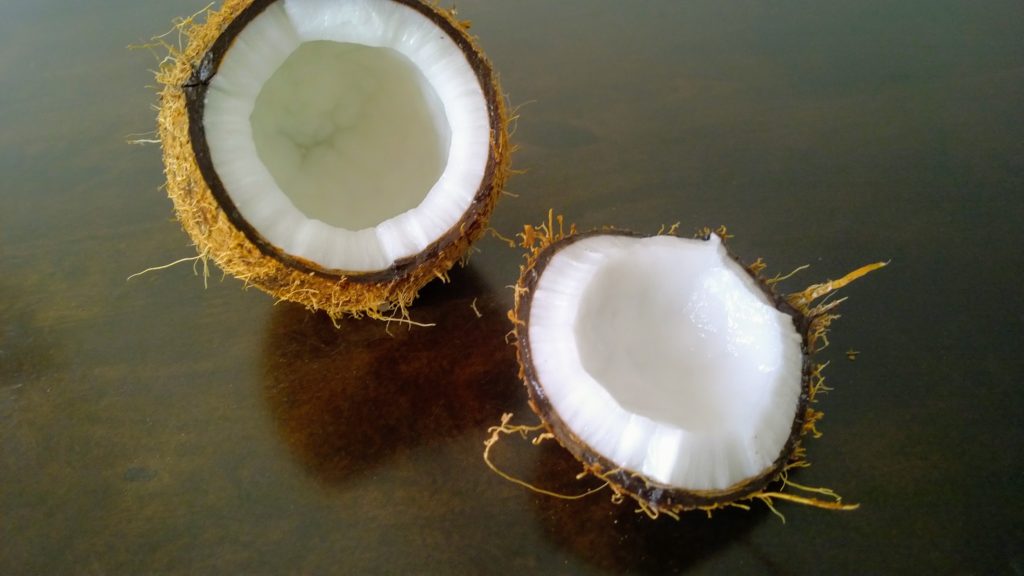
Break the coconut into two halves after cleaning it.
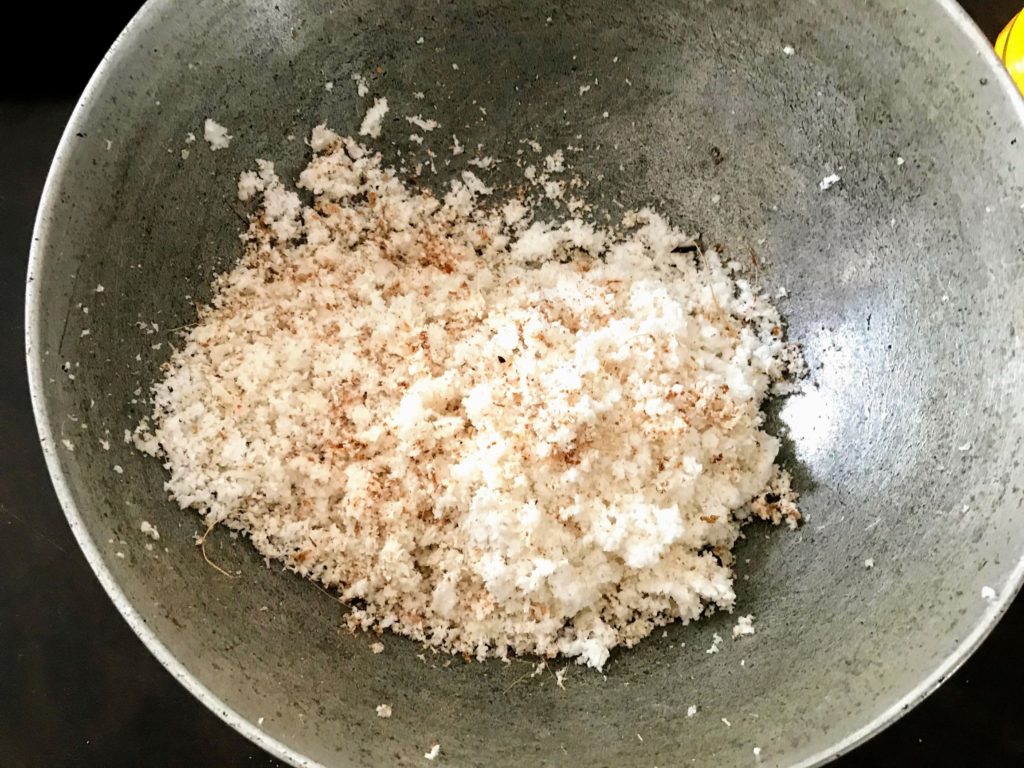
Grate the coconut.
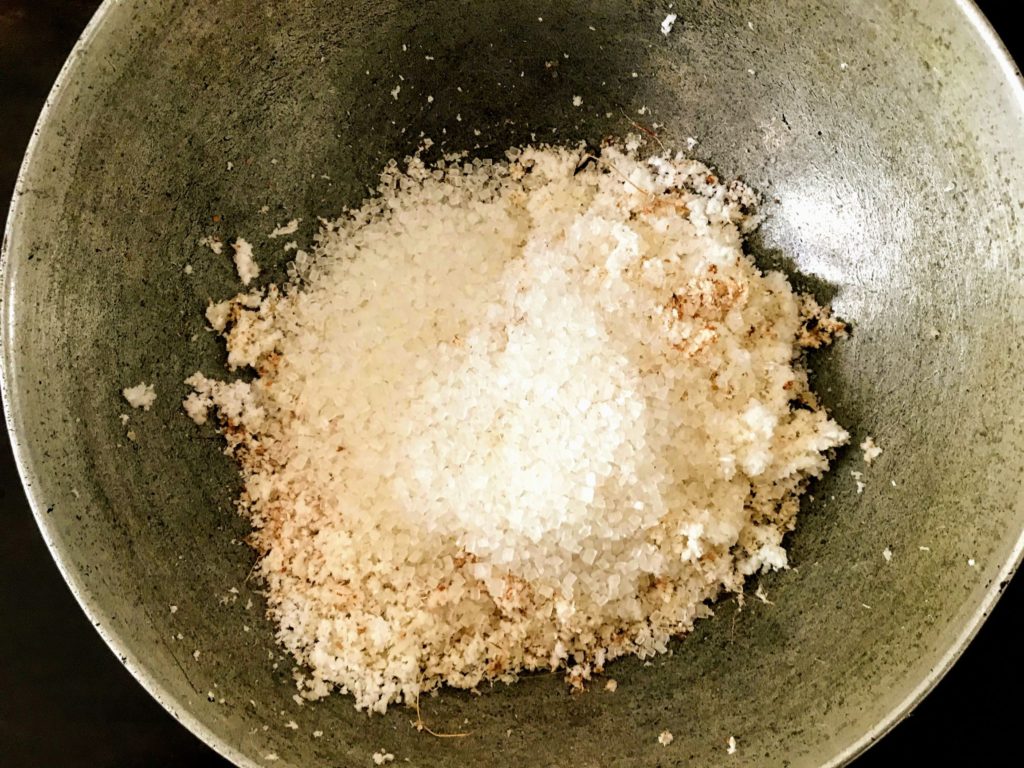
Cook the coconut with sugar.
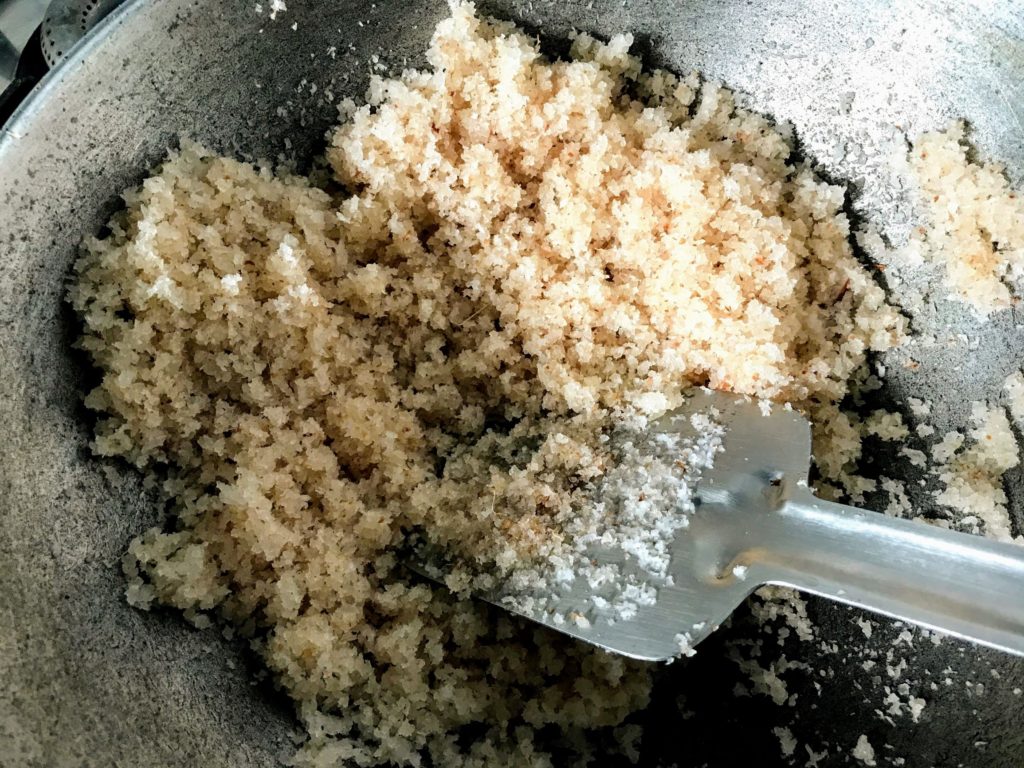
Stir the coconut till the mixture become sticky.
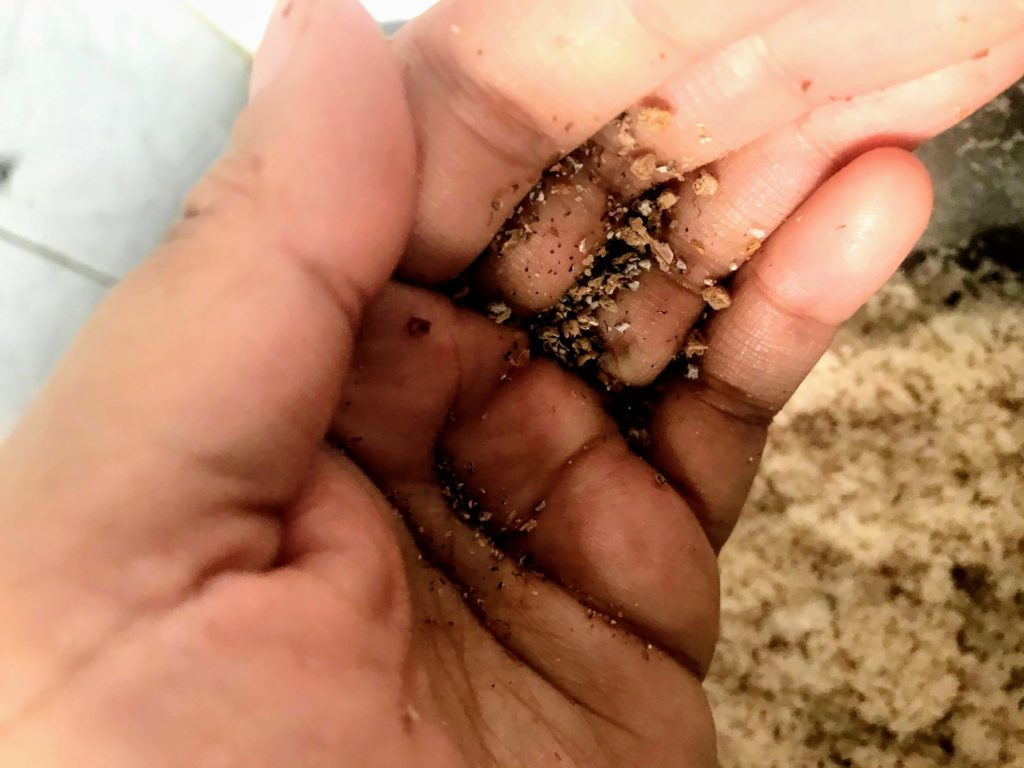
Sprinkle crushed cardamom seeds.
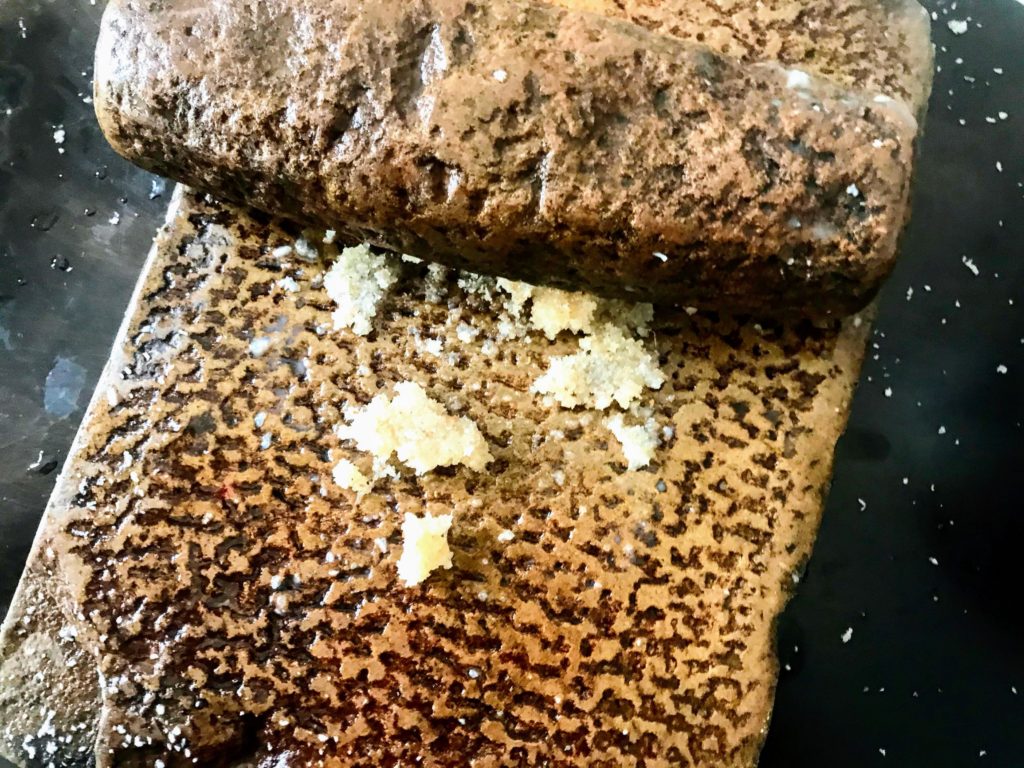
Grind a small portion of coconut mixture on a Batan,
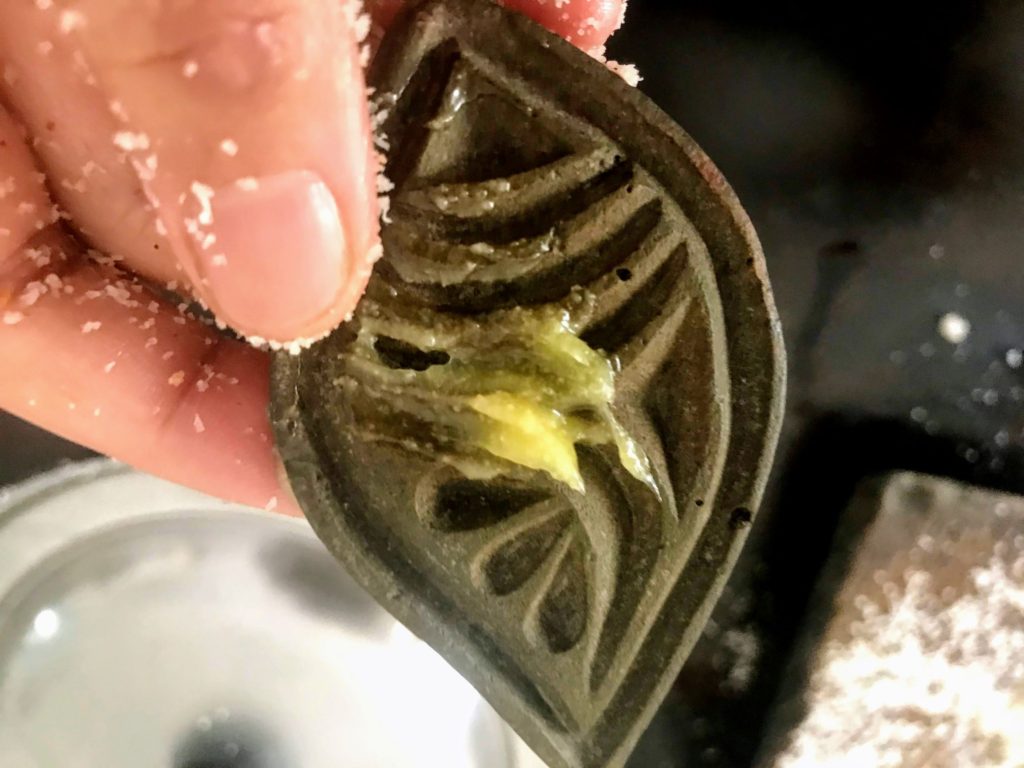
Apply ghee on the mould.
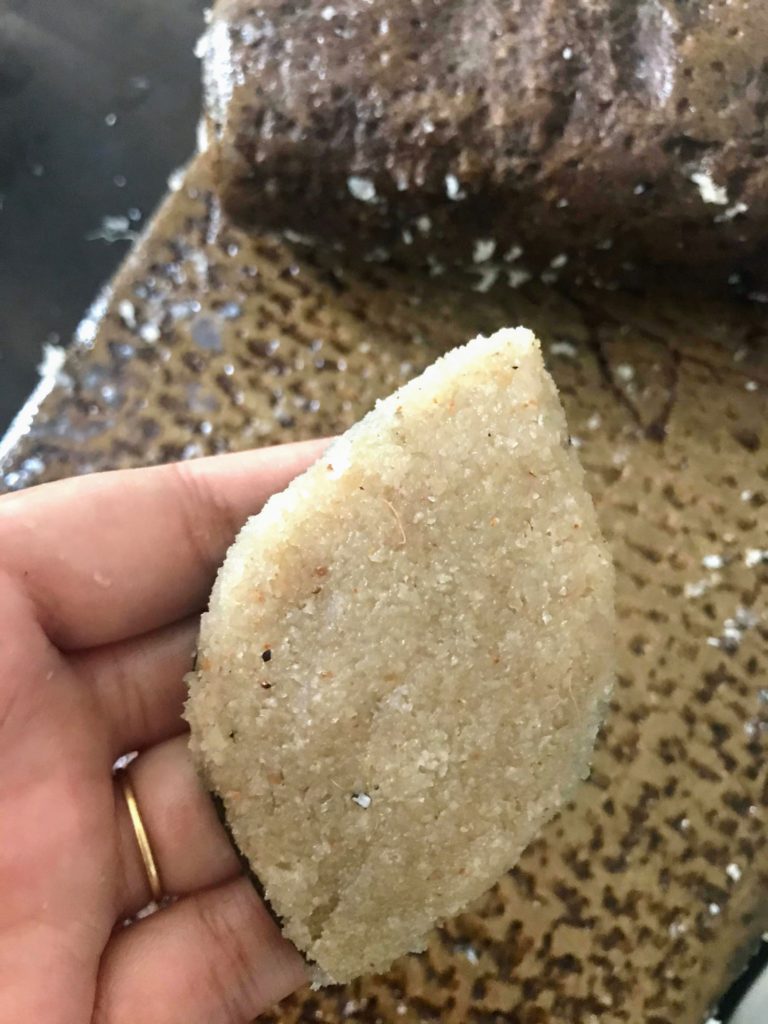
Put the ground coconut mix on the mould and hold for 20 seconds.
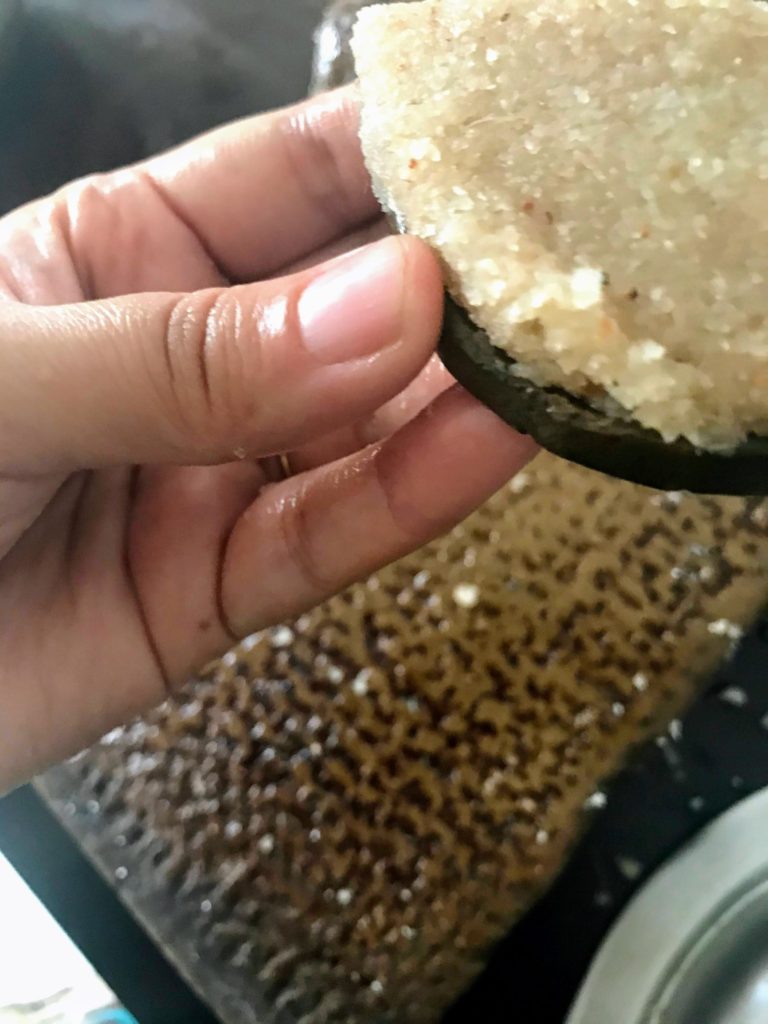
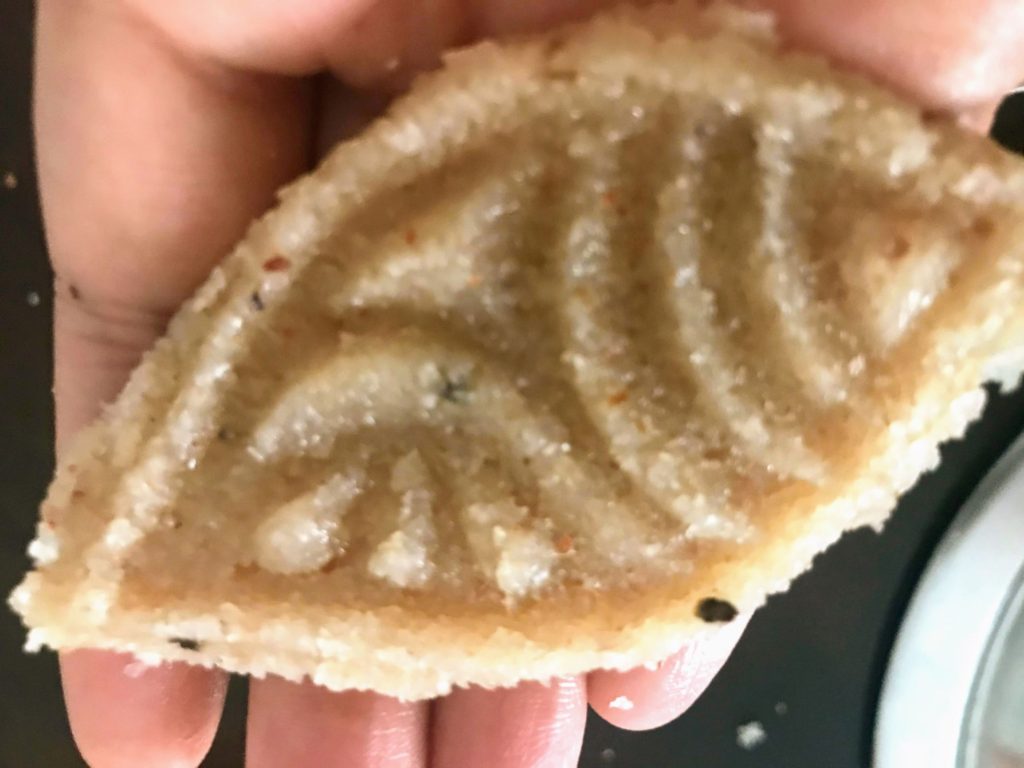
Gently pull the coconut mix out from the mould.
Tips:
- Use a fleshy coconut with less water, so that the sandeshes are not too soft to hold shape
- Once you put coconut and sugar into the pan, don’t stop stirring until the mixture is done
- It is very important that the coconut is perfectly cooked with the sticky texture. Over cooking will make it powdery (which happened with me) and under cooking will not allow the sugar to dissolve. In both the cases the mould cannot hold the coconut
- Pull from the edges, to take out the Sandesh successfully from the mould
- For best results keep the Sandesh in fridge
- The chances of having batan at every home is very rare. To get the batan like texture, grind the coconut in your regular grinder for one round
- In case you do not have mould at home, use your hand to arrive at different shapes with the coconut mix. You can even use cookie cutter to form different shapes
Things That Went Wrong With Me, Which Should Not Be Ignored:
- The granules size of the sugar I was using were little bigger than the regular sugar. This led more time for the sugar to dissolve, and by that time the moisture from the coconut evaporated completely
- I forgot to reduce the flame of the stove in the beginning, while cooking coconut and sugar. This resulted in little burning of coconut particles at the bottom of the pan. Which means the coconut and the sugar need to be cooked on low flame with continuous stirring
- Although milk made the coconut mixture soft, but since it was not added in the beginning, it was not cooked properly. The after effect was, although I could pull off the coconut mix from the mould and arrived at a great shape, but after cooling down the Sandesh could not become firm, which made the act of eating difficult, and could only be managed after the pieces were refrigerated
